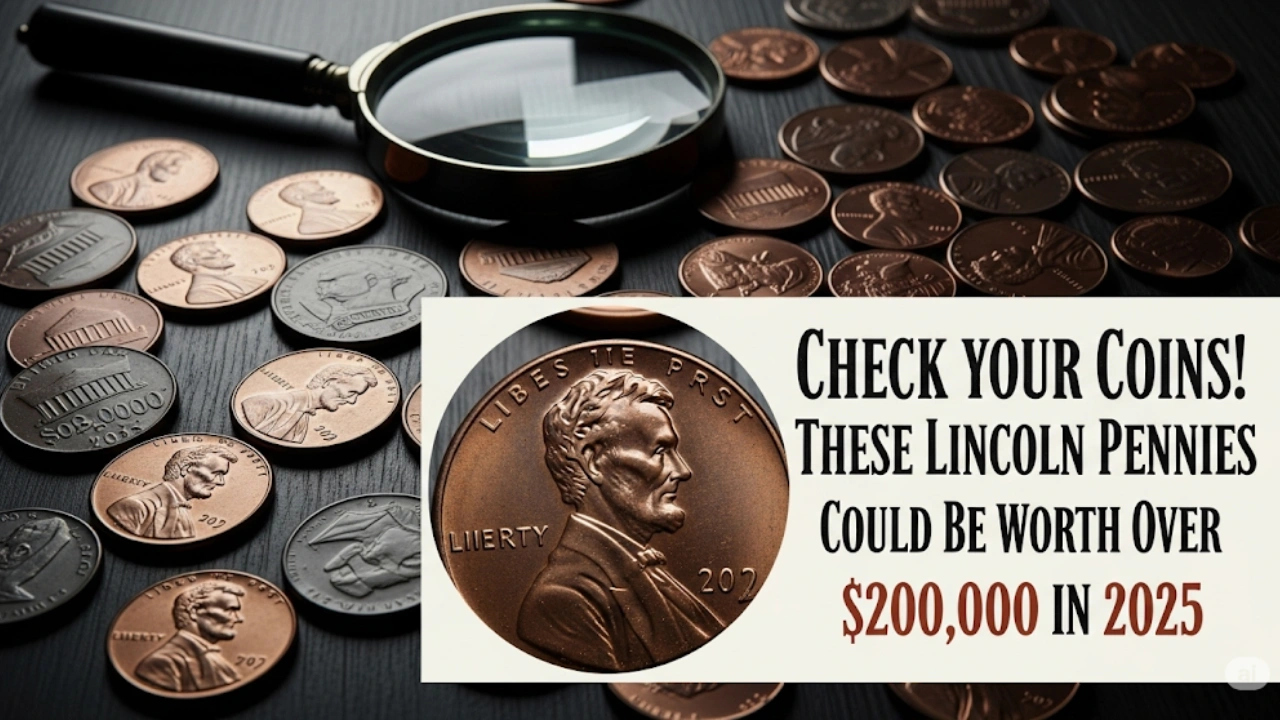Forget stocks and crypto for a second. The next life-changing windfall might be jingling in your pocket right now. Seriously. Ordinary-looking Lincoln pennies, the workhorses of American change, are commanding jaw-dropping prices at auction in 2025. We’re not talking a few extra bucks – we’re talking six and even seven figures for specific, rare dates and errors. Could your piggy bank hold a hidden fortune?
Why Are Some Pennies Worth a Small House?
It boils down to scarcity and desire. Minting errors, incredibly low production numbers for specific years, or unique experimental compositions make certain pennies vanishingly rare. Combine that with the passionate, deep-pocketed world of numismatics (coin collecting), and you have a recipe for astronomical values. In 2025, collectors are more aggressive than ever, driving prices for top-condition rarities to unprecedented heights.
The Holy Grails Hiding in Plain Sight (Maybe):
While countless variations exist, a few legendary Lincoln cents consistently make headlines in 2025:
-
The 1943 Copper Cent: This is the ultimate penny pipe dream. During WWII, pennies were supposed to be struck on zinc-coated steel to save copper for the war effort. But a tiny number (estimates range from 10-40) were accidentally minted on leftover copper planchets. Finding one in decent condition today could easily surpass $200,000 – potentially much more. If you have a 1943 penny that isn’t magnetic (steel sticks to a magnet, copper doesn’t), stop everything and get it certified!
-
The 1955 Double Die Obverse: A famous mint error where the coin’s design elements (especially the date and “LIBERTY”) appear doubled due to a misalignment during the striking process. While more known than the ’43 Copper, high-grade examples certified by PCGS or NGC still fetch $10,000 to well over $25,000 in 2025 auctions. Key identifiers are clear doubling visible with a simple magnifying glass.
-
The 1969-S Doubled Die Obverse: Another dramatic doubling error, primarily visible on the date and inscriptions. Authentication is CRUCIAL here due to sophisticated counterfeits. A genuine, high-grade specimen? Expect $50,000+ if it hits the market.
-
The 1972 Doubled Die Obverse: Less pronounced doubling than the ’55 or ’69-S, but still highly sought-after by error collectors. Values for mint-state examples regularly hit $5,000 – $15,000+ this year.
-
Modern Error Pennies (1990s-Present): Don’t dismiss newer coins! Dramatic errors like off-center strikes (30% or more), broadstrikes (coins struck outside the collar), or major die cracks/breaks on pennies from the last few decades can bring $500 to $5,000 or more, especially if well-preserved. Social media groups dedicated to coin errors are buzzing with finds in 2025.
Is Your Pocket Change a Goldmine? Here’s Your 2025 Action Plan:
-
Start Sorting & Inspecting: Go through old jars, drawers, or inherited collections. Look closely at every Lincoln penny, especially key dates (1909-S VDB, 1914-D, 1922 No D, 1931-S, 1955, 1969-S, 1972, 1982 varieties, 1992 Close AM, 1995-D Doubled Die) and any coin that looks “off” or doubled.
-
Get Magnified: A simple 5x-10x jeweler’s loupe is essential for spotting doubling, small errors, and mint marks.
-
Check Magnetism: Crucial for 1943 pennies! A magnet won’t stick to the ultra-valuable copper version.
-
Condition is KING: A coin worth $50 in worn condition could be worth $5,000 in pristine Mint State. Handle coins carefully by the edges.
-
Seek Professional Authentication & Grading: This is non-negotiable for any potentially valuable coin. Submitting to the top services (PCGS or NGC) costs money but is the only way to confirm authenticity, grade, and unlock maximum value, especially for six-figure rarities. Their 2025 certification standards are the industry benchmark trusted by collectors globally.
The Takeaway: Look Before You Spend!
The allure of finding a fortune in your spare change is very real in 2025. While true mega-rarities like the 1943 Copper Cent are lottery-ticket finds, significant value hides in more accessible errors and conditional rarities. Understanding what makes a penny valuable – unique errors, low mintage, exceptional preservation – and knowing how to identify them (and crucially, how to get them professionally authenticated) is your key. So, before you dump those pennies into a Coinstar, take a closer look. Your next coffee could be funded by a coin worth thousands, or maybe, just maybe, life-changing wealth. Happy hunting!
Also Read: Million-Dollar Dust Bunnies? Your Junk Drawer Treasures Could Be Worth a Fortune in 2025!
Hi, I’m Ehsaan Mukherjee – the mind behind slategray-tarsier-598917.hostingersite.com. I’ve always been fascinated by the power of technology and the thrill of automobiles. This platform is my personal space where I explore, write, and share everything that excites me in these two dynamic worlds.
Whether it’s breaking down the latest car models or diving into the world of innovative gadgets, I believe in keeping things simple, practical, and useful. slategray-tarsier-598917.hostingersite.com is more than just a website — it’s my way of connecting with curious minds like yours.
